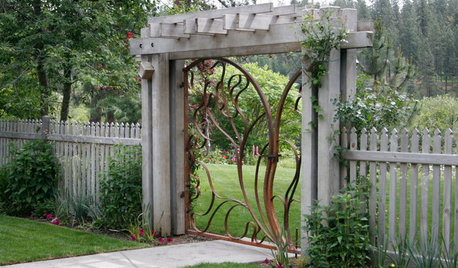Any PNW native plants with good story-line for children ??
mdvaden_of_oregon
14 years ago
Related Stories

GROUND COVERSNative Alternatives to English Ivy, Japanese Pachysandra and Periwinkle
These shade-loving ground covers are good for the environment and say something about where you are
Full Story
GARDENING GUIDESHow to Find the Right Native Plants for Your Yard
Find plant maps, sale sites and guides that make going native in the garden easier than ever
Full Story
GARDENING FOR BUTTERFLIES3 Ways Native Plants Make Gardening So Much Better
You probably know about the lower maintenance. But native plants' other benefits go far beyond a little less watering and weeding
Full Story
GARDENING GUIDES10 Top Native Plants for the U.S. Southeast
For a low-maintenance and wildlife-friendly landscape, use Southern natives that withstand heat and humidity
Full Story
GARDENING GUIDESWe Bust 4 More Native Plant Myths
Have you been taken in by these fallacies about gardening with native plants?
Full Story
LANDSCAPE DESIGNThe Garden Gate: A Preface to the Story Your Garden Wants to Tell
Setting the tone for your garden starts with the right entry
Full Story
INSPIRING GARDENSNative Plants Bring 10 Southern California Front-Yard Gardens to Life
Rare plants, rain gardens and wildlife habitats are just a few of the features showcased on the 2016 Theodore Payne Native Plant Garden Tour
Full Story
LANDSCAPE DESIGNNative Plants Help You Find Your Garden Style
Imagine the garden of your dreams designed with plants indigenous to your region
Full Story
TREESGreat Design Plant: Southern Magnolia, Iconic U.S. Native
Massive, fragrant blooms and deep green leaves set Magnolia grandiflora apart from other large shade trees
Full StorySponsored
Franklin County's Custom Kitchen & Bath Designs for Everyday Living
More Discussions











reg_pnw7
hemnancy
Related Professionals
Folsom Landscape Architects & Landscape Designers · Aloha Landscape Contractors · Harvey Landscape Contractors · Madera Landscape Contractors · Mequon Landscape Contractors · Mercedes Landscape Contractors · North Highlands Landscape Contractors · St. Louis Landscape Contractors · St. Louis Landscape Contractors · West Allis Landscape Contractors · Chicago Ridge Landscape Contractors · Brooklyn Fence Contractors · Carmichael Fence Contractors · Cherry Hill Fence Contractors · The Villages Fence Contractorshemnancy
cedar_wa
brody
George Three LLC
dottyinduncan
larry_gene
mdvaden_of_oregonOriginal Author
Embothrium
mcsix
muddydogs